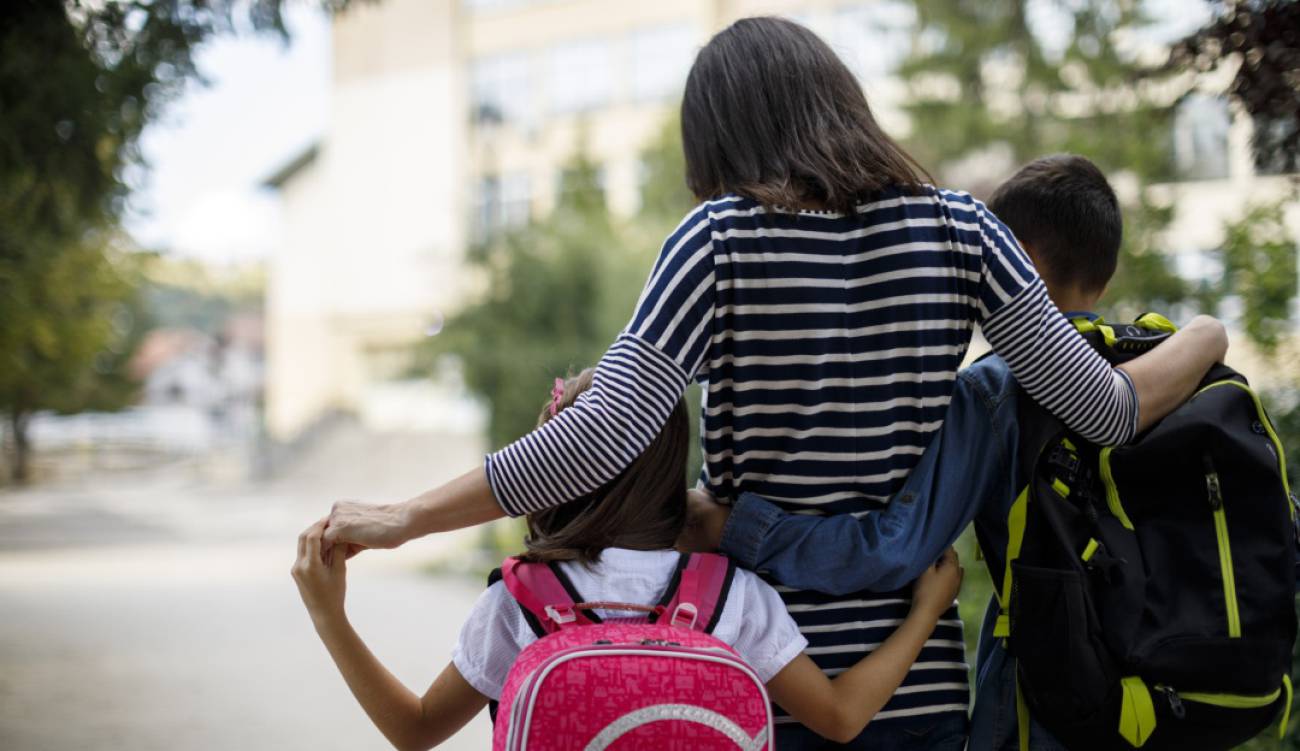A more efficient allocation of daycare centers, aligned with urban production centers, could allow Peruvian companies to avoid disruption of work, open spaces for women to enter or re-enter the labor market and invest in their current and future workforce. Fewer countries have been hit by the pandemic than Peru, exposing its unstable labor market. The time for a reckoning on family-friendly workplaces is now.
Peru, and beyond, need to stop looking at childcare provision as merely a social service, and understand its potential to spark employment and economic growth. Under such logic, everyone should be on board to expand opportunities for working mothers. The critical situation after the coronavirus pandemic calls for an urgent reimagining of this public good.
Women were already behind in access to quality employment; Covid-19 exacerbated these differences.
The coronavirus pandemic ravaged Peru’s economy and social fabric. While GDP per capita fell by the largest fraction in the past 30 years (by a whopping 12,39%)[1], official estimates point to over 202,000 deaths related to Covid-19[2]. Most face-to-face public service provisions were halted, schools continue closed as of today (December 2021), and informal employment spiked up to the 2011 level.
Experts initially estimated that service and manufacturing sectors, where young people and women are employed in higher ratios, would be strongly impacted by the crisis.[3] And indeed, women’s participation in employment has set back to 2007 levels, with 1.2 million women out of the labor force in 2020[4]. Today, 75.3% of working women are informal, and in 24 out of 25 of Peru’s regions, women lost their employment at higher rates than men. Around 263,700 Peruvians were pushed from their job into family work, the vast majority performed by women.
Women spent more time doing household chores, they are consistently found at subemployment jobs (either earning or working less than what is legally mandated), and they are almost 30% less likely than men[5] to earn a formal wage.
Among themselves, women with children spent 80 hours a week working, 47.5 hours they devote to caregiving responsibilities. The gap between those with and without children varies across earning quintiles – from a 20-hour difference at the poorest bracket to a 16-hour difference among the highest earners[6] – but the pattern is the same: across incomes, and indeed across Latin America, there is a social expectation for women to care. That they can work is, based on policy efforts, an added value, accessible either paid childcare (amongst the well-offs) or community or family-based networks (amongst the most vulnerable).
How the status quo does not support working formal mothers
One solution, heralded by experts in Peru and abroad[7], is to reform the care system and made it easier for women to access formal employment and achieve work-life balance. Of course, female insertion in the labor force is much more complex and demands multiple stakeholders (in terms of gender, sector, and community). But we could argue that the current conceptualization of public childcare – a system in place in Peru – is not suited to solve the caregiving needs of mothers.
In 2012, Peru introduced Cuna Mas, its flagship public early childhood program, for children 6-36 months old in households below or near the poverty line. It provides a day-care service for families in rural and urban areas through a multidimensional approach[8], including meals for children, parental engagement, and holistic care from trained caretakers. Covid-19 has forced the closure of virtually all Cuna Mas centers, demanding all parties in society to address the issue or face sustained negative effects.
Although the reopening of day-care centers is necessary, structural flaws in Cuna Mas remain, hindering access to employment and community engagement.
Besides being open only to families in precarious conditions – which limit beneficiaries to women without a formal job – the program has inflexible day-care schedules in conflict with regular work shifts. While there is evidence of a reduction in informal work, there is not necessarily an increase in formal labor for benefitted parents. Boyd and Renteria (2018) showed how Cuna Mas’ design led to long working hours and poor labor conditions for hired caretakers, who are not equipped to establish community-level engagements[9]. Cuna Mas’ policy architecture relied heavily on similar interventions in the US and Latin America (such as Brazil and Ecuador), while not accounting for Peru’s unique context: such as its over 70% informality rate.
All these factors lead to reduced trust, deficient quality of the service, and a high rotation rate. Because the intervention was conceived around children’s developmental needs and not parents’, caretakers’, or potential employers’, it is disjointed from its immediate social and economic community.
Reimagining Cuna Mas requires a demand analysis from non-traditional actors such as care unions, community organizations, and even companies. It also demands the Peruvian government to expand the scope of results from the program beyond child development, and to include labor integration for parents.
The link between employers and care
Service sectors critically impacted by COVID-19 can benefit from productivity gains accrued by working parents accessing childcare; yet, estimates point only 6% of medium-large companies currently offer this service[10]. This is due to the care agenda not being prioritized by the government nor society, relegated as an afterthought: an “add-on” labor demand by unionized organizations traditionally led by men.
Employers will understand how childcare limits push back on the productivity of their workers. Companies today have introduced policies such as flexi-work, compressed time, or home office which would have been unthinkable before March 2020. Enterprises not only benefit from these policies; they are in the process of being enforced. By late 2020, Peru approved Law 30036, regulating teleworking under no uncertain terms. Formal employers understood this unique momentum and why work-life balance is essential for children, parents, and for the bottom line. The challenge remains on rallying small and medium enterprises towards this aim, which constitute more than 99% of all firms.[11]
A way forward
Peruvian businesses and the State can avert bankruptcy and support working parents by moving ahead and demanding a multi-stakeholder coalition for childcare where the private sector, caretaker unions, and community-based organizations are represented at the table.
After emerging from the crisis, companies can push the Peruvian government towards a public-private daycare service that caters beyond Cuna Mas’ theory of change, facilitating the work-life balance of workers in their areas of operation. They could go as far as to influence the geographical placements of new public day-cares in areas near their factories or offices. Conversely, the State can prioritize childcare as lockdowns ease and public services reopen. By driving the demand for these services, they can expand the number of daycares and create incentives for firms to co-finance these centers. Peru’s experience with Obras x Impuestos – a tax-deductive incentive for firms to develop infrastructure projects – can serve as precedent.
Acting together, these unlikely allies would reduce the vulnerability of low and middle-income families, and in the long term secure a safer community of engaged citizens and a proficient workforce.
[1] World Bank Development Indicators, 2020. Available in: https://data.worldbank.org/indicator/NY.GDP.PCAP.KD.ZG?end=2020&locations=PE&start=1961
[2] Ministry of Health of Peru (MINSA, 2021). Dashboard available in: https://covid19.minsa.gob.pe/sala_situacional.asp
[3] International Labour Organization (2020). “Perú: Impacto de la COVID-19 en el empleo y los ingresos laborales”. URL: <https://www.ilo.org/wcmsp5/groups/public/—americas/—ro-lima/documents/publication/wcms_756474.pdf>
[4] INEI (2021). “Evolución de los indicadores de empleo e ingreso por departamento, 2007-2020.” Available in: https://www.inei.gob.pe/biblioteca-virtual/publicaciones-digitales/
[5] Ibid.
[6] Peru Ombudsperson Office (2020). “El Impacto Económico del Trabajo no Remunerado y de cuidados en el desarrollo de mujeres“. Pg. 26.
[7] Oxfam (2020). “Tiempos de cuidado. Desigualdades, economía feminista y trabajo de cuidados en el Perú. Aportes para transformar un sistema en crisis”. Pg. 6.
[8] Guerrero, G., Leon, J. (2017). “Evaluación de Impacto del Servicio de Cuidado Diurno del Programa Nacional Cuna Mas”. Ministry of Development and Social Inclusion of Peru. URL: <http://evidencia.midis.gob.pe/evaluacion-de-impacto-del-servicio-de-cuidado-diurno-del-programa-nacional-cuna-mas/>
[9] Boyd, C. and Renteria, J.M. (2018) “Economía del cuidado, disparidades de género y participación en el mercado laboral: el caso de Cuna Mas”. IEP and CIES. Pg. 92-95. URL: <https://www.cies.org.pe/sites/default/files/files/articulos/economiaysociedad/como_impacta_el_programa_cuna_mas_en_la_economia_de_cuidado_en_el_mercado_laboral_y_la_igualdad_de_genero.pdf>
[10] UNICEF (2018). “¿Qué están haciendo las empresas por la niñez en el Perú?”. Survey Report. Pg. 11. URL: <https://www.unicef.org/peru/informes/que-estan-haciendo-las-empresas-por-derechos-ninos-en-el-peru>
[11] PRODUCE-OGEEI (2020). “Estadística MYPYME”. Accessed on December 5, 2021, available on: https://ogeiee.produce.gob.pe/index.php/en/shortcode/estadistica-oee/estadisticas-mipyme

Francisco Biber is a first-year MPA student focusing on the intersection of work and development. Prior to HKS, he worked at UNICEF regional bureau for Latin America and the Caribbean, advising country offices and engaging companies around the protection and empowerment of children. He was born and raised in Peru and holds a dual bachelor’s degree in International Affairs and Business.
